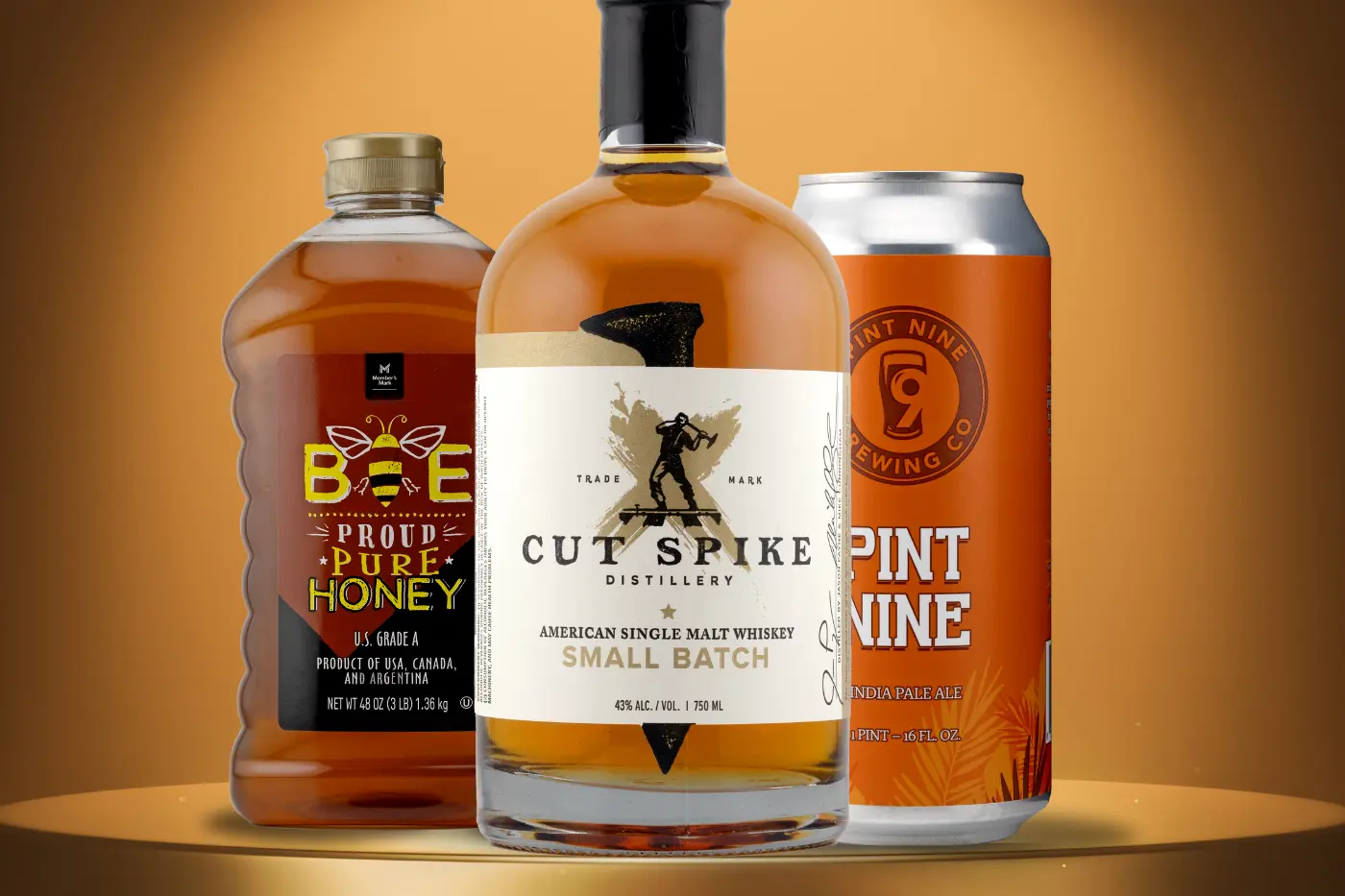Labels are more than just stickers—they’re your product’s first impression. They play a critical role in branding, communication, and connecting with your customers. Understanding the ins and outs of label printing can help you make informed decisions that set your product apart.
From conveying essential details like ingredients and usage instructions to showcasing your brand’s identity, your choices of label sizes and shapes are endless. But navigating the world of custom labels starts with knowing the right terms.
In this guide, we’ll break down key label printing terminology, including label components, printing techniques, materials, and more. Whether you’re refining your existing labels or starting from scratch, you’ll walk away with the knowledge to create labels that make an impact.
Key Definitions in Label Printing
Think of a product label as your product’s handshake—it’s the first impression your customers encounter. Whether crafted from paper, plastic, or other materials, labels communicate vital information like your brand name, logo, ingredients, and other details. In today’s competitive market, a well-designed label is critical to standing out.
Components of a Label
A successful label is more than just its design. Here’s what makes up its foundation:
- Label Material: The base of your label, such as paper or plastic, defines its durability and appearance.
- Adhesive: This is the “stick” factor—permanent adhesives are long-lasting, while removable adhesives offer flexibility.
- Print Finish: A glossy shine or matte elegance can drastically impact your label’s look and feel.
- Color: From vibrant, eye-catching hues to spot colors for precise branding, color brings your label to life.
- Size and Shape: Whether it’s a compact circle or a bold rectangle, your label’s dimensions should suit both your product and brand identity.
Every element works together to create labels that endure and stand out on the shelf.
Color Modes: CMYK vs. RGB
Color choices impact your brand’s identity. During the label design process, selecting the correct color mode is essential based on your label’s medium:
- CMYK: Ideal for printed labels, CMYK uses Cyan, Magenta, Yellow, and Black to deliver vivid, precise colors.
- RGB: Perfect for digital screens, this mode combines Red, Green, and Blue for on-screen vibrancy.
Choose wisely to ensure your label’s colors stay true, no matter the medium.
The Role of Bleed in Label Design
Bleed is a small yet critical detail in custom label design. It’s the extra margin of space around your label design that prevents unwanted white edges after cutting. Including a bleed ensures your labels maintain a polished, professional finish every time.
Why Clear Space Matters
Clear space is like the frame around a masterpiece—it enhances readability and creates a polished, uncluttered appearance. By leaving a buffer zone around text and images, you ensure key details shine through without distractions, delivering a clean and professional design that aligns with your brand’s standards.
Material Considerations: Choosing the Perfect Label for Your Product
Selecting the right label materials is key to ensuring your product packaging performs as beautifully as it looks. With a wide variety of materials available, each offering unique benefits, understanding your options helps you create durable and vibrant labels perfectly suited to their purpose.
Selecting the Right Label Material
The material you choose impacts both the look and functionality of your custom labels. Start by considering the environment your product will encounter:
- Wet or Outdoor Use: Opt for moisture-resistant materials to ensure your labels stay intact.
- High-Durability Needs: For rugged products, like tools or shoes, select materials with strong or permanent adhesives to ensure labels stay put.
- Clean Removal: If your label needs to peel off without residue, removable adhesives are the way to go.
Here’s a quick guide to popular label materials and their best uses:
| Label Material | Best For |
| Paper | Budget-friendly, indoor products |
| Vinyl | Long-lasting, outdoor exposure |
| Polyester Film | Tear- and moisture-resistant applications |
| BOPP (Polypropylene) | Premium labels for wet conditions |
Adding the Finishing Touch: Label Finishes
A well-chosen finish can elevate your label’s impact, making your product stand out in competitive spaces. Depending on your brand and product goals, you can choose between two popular finishes:
- Matte Finish: Ideal for brands aiming for a natural, understated look. This non-shiny finish works well for eco-conscious products or those with a minimalist aesthetic.
- Glossy Finish: Eye-catching and vibrant, a glossy finish enhances colors and gives your labels a polished, premium appearance—perfect for products that need to grab attention.
A carefully selected material and finish combination doesn’t just protect your label—it positions your brand for success.
Application Methods: Ensuring Your Labels Stick and Shine
The right application method allows you to create product labels that look great and perform flawlessly. From resistance to moisture to navigating tricky surfaces, understanding your options will help you select the appropriate application method.
Adhesive Options: The Foundation of Label Performance
Adhesives are the unsung heroes of label design. The right adhesive ensures your labels stay exactly where they belong, regardless of the conditions they face. Here are the primary options:
- Permanent Adhesive: Designed for longevity, this adhesive creates a firm, lasting bond—perfect for products that require labels to stay put.
- Removable Adhesive: Offers flexibility by peeling off cleanly, making it a great choice for temporary labels or products with sensitive surfaces.
- Moisture-Resistant Adhesive: Built to withstand water and humidity, this option keeps labels intact even in challenging environments.
Matching your adhesive type to your product’s surface and usage ensures reliability and a professional finish.
Application Techniques and Tools: Perfect Placement, Every Time
How you apply your labels can impact their appearance and longevity. The right technique or tool makes all the difference:
- Hand Application: A simple, budget-friendly option for small batches. Just peel, position, and stick.
- Label Applicators: A time-saver for small to medium production runs, these tools ensure labels are applied quickly and with consistent precision to the application surface.
- Label Printer Machines: For large-scale production, these all-in-one solutions print and apply labels seamlessly, boosting efficiency and accuracy.
Using the right adhesive and application method isn’t just about functionality—it’s about presentation. Testing application techniques is always a good practice to ensure the best results for your product.
Printing Techniques: Digital vs. Traditional Printing
The printing technique you choose plays a key role in the appearance, durability, and cost of your labels. With two main options—digital and traditional printing—understanding the differences helps you make the best choice for your product and production needs.
Digital Printing
Digital printing is a modern solution for flexible, high-quality label production, digital printing uses digital files to print directly onto the label material. Without the need for printing plates, this method excels in delivering vibrant colors, detailed designs, and quick turnarounds—ideal for small runs or frequently updated designs.
Digital printing technology offers several advantages that make it a versatile choice for many businesses including quick turnaround, design flexibility, and material versatility.
Traditional Printing
Traditional printing via flexographic printing involves using plates to transfer ink onto the label material. This technique is perfect for large-scale production where costs decrease with higher volumes. Traditional printing shines in producing simple designs with limited colors (spot color) and offers cost efficiency for bulk orders.
Traditional printing can create barriers with turnaround time due to a hands-on process for setup time and pre-print preparation. While flexographic printing has its place, it’s best suited for large-volume orders with simpler designs.
Making the Right Choice for Your Labels
Choosing between digital and traditional printing depends on your specific needs. For fast, flexible, and smaller orders, digital printing is the go-to. For large-scale production with simpler designs, traditional printing delivers excellent value.
By understanding these printing techniques, you can make informed decisions that ensure your custom product labels not only meet your product requirements but also help your brand stand out on crowded shelves.
Mastering Label Printing Terminology
Understanding label printing terminology isn’t just helpful—it’s a game-changer in today’s competitive market. Familiarity with terms like “flexographic printing,” “digital printing,” and “spot color” empowers you to make smarter decisions that enhance your product’s presentation and performance.
From selecting the right materials—whether moisture-resistant or featuring removable adhesives—to choosing the ideal printing process, each choice plays a critical role in creating finished labels that captivate customers and elevate your brand.
By mastering these concepts, you’re not just creating labels—you’re building a powerful tool to help your products stand out on crowded shelves.
For more expert tips, industry insights, and creative inspiration on custom labels, sign up for our newsletter.


